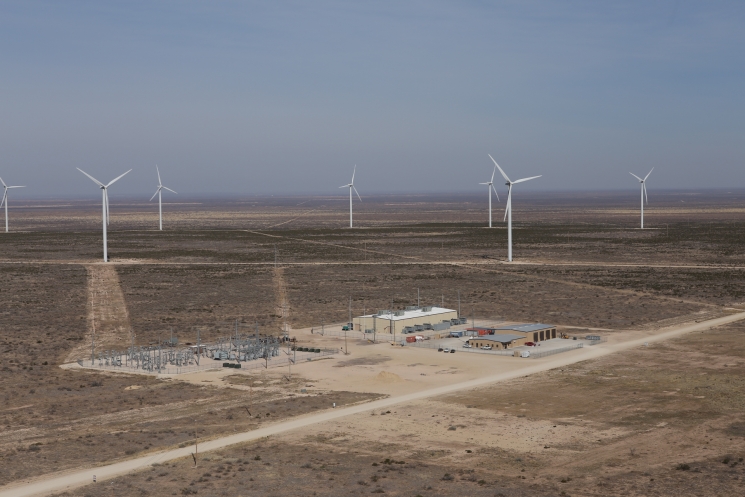
Energy DepartmentThe Notrees Wind Storage Demonstration Project in Texas combines wind turbines and advanced lead-acid batteries.
The sun would never set on solar power under an ambitious new proposal in the Golden State.
The California Public Utilities Commission is considering new rules that would require the state’s utilities to spend heavily on large batteries. That would allow wind and solar energy produced during sunny and blustery conditions to be saved and sold even on calm nights.
The proposed rules would help utilities meet California’s ambitious requirement that 33 percent of their electricity come from renewable sources by 2020. They would also help spur a battery industry that’s considered critical for the widespread adoption of renewable energy.
The rules [PDF], which could be approved as soon as today, would require PG&E, Southern California Edison and San Diego Gas & Electric to install battery systems capable of holding 1.3 gigawatts of electricity by 2020. Once juiced up, that much battery power could be tapped to provide electricity to about 1 million homes.
The San Jose Mercury News reports that the proposal is being cheered by the renewables sector:
“This is transformative,” said Chet Lyons, an energy storage consultant based in Boston. “It’s going to have a huge impact on the development of the storage industry, and other state regulators are looking at this as a precedent.”
Utilities, leading energy companies, Silicon Valley startups and researchers at the nation’s top universities and national labs have been searching for cost-effective ways to store energy for future use. Several different kinds of storage technologies are being developed. Pumped storage projects move water between two reservoirs at different elevations. When demand is low, electricity is used to pump water from the lower reservoir to the upper reservoir; when demand is high, the water is released through a turbine to generate electricity.
Flywheel energy storage accelerates a rotor to high speeds, creating a kinetic battery. And there is a lot of focus on stationary batteries, from lithium-ion to sodium-sulfur.
But the market has been slow to develop. Several utilities have small pilot projects in the works, but nothing on a large scale.
Nobody yet knows what the proposal would cost the state’s electricity customers, if anything. That’s because the new rules would require the utilities to begin a process of procuring cost-competitive battery solutions. “California is saying that … these new solutions have to be cost-effective,” said Chris Shelton, president of Virginia-based AES Energy Storage. “Which is key if storage is really going to be viable.”
Update: The regulations were adopted by the CPUC. Read more at the San Francisco Chronicle.



